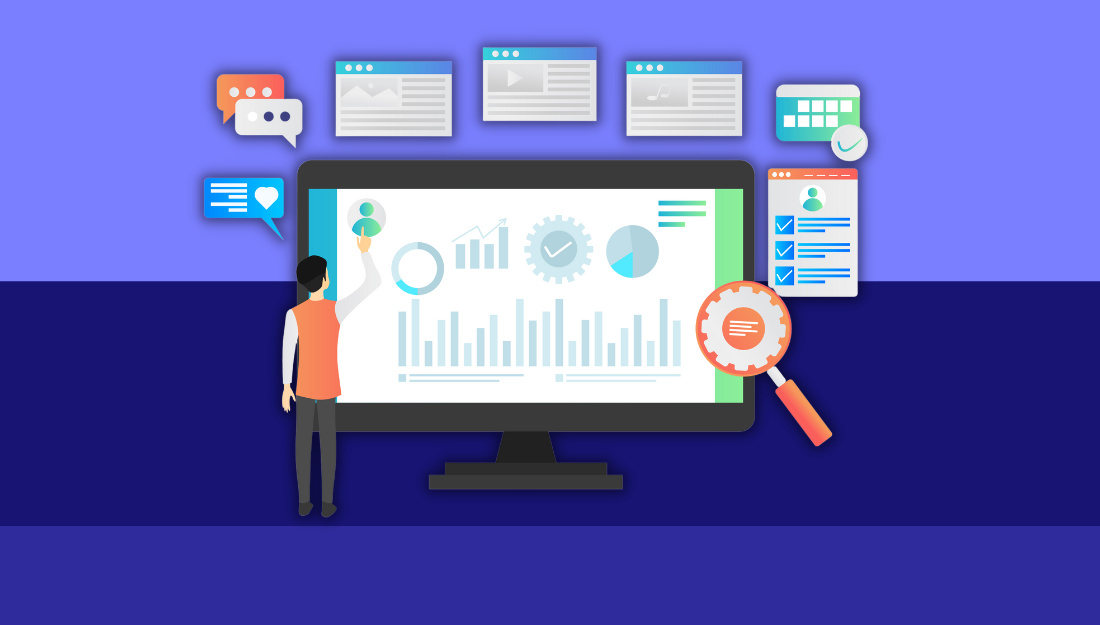Salesforce is a powerful technology tool that gives companies the ability to manage customer data and streamline processes. One of Salesforce’s most popular features is reports, and dashboards are also often utilized because they both offer useful insights into the data being gathered. The concepts of Salesforce reports and dashboards, as well as when to use each, can be understood if you take up an online salesforce administrator training course. In this article, you can read and understand Salesforce reports and dashboards and get some advice on when to use each.
Salesforce Reports:
The reports feature in Salesforce is an effective tool for data analysis and getting insights into the operation of your company. Leads, contacts, accounts, and opportunities are just a few examples of the various things that can have data analyzed using reports. If you complete an online Salesforce admin course, you can learn to filter data, group data according to predetermined criteria, and summarize data.
Types of Reports in Salesforce:
Tabular Reports:
Tabular reports display data in a straightforward tabular style. They may be used to analyze vast amounts of data and spot trends.
Summary Reports:
In addition to subtotals and categories, summary reports are comparable to tabular reports in format. They are helpful when categorizing data, such as by-product or area.
Matrix Reports:
Summary reports and matrix reports are similar. However, cross-tabulation is also included in matrix reports. Complete an online Salesforce admin course to effectively compare business data.
Joined Reports:
Data from many report kinds can be combined into a single report using joined reports. They can be used to analyze connected data from various items.
When to Use Salesforce Reports:
Salesforce reports let you thoroughly evaluate big amounts of data and derive insights from it. Reports can also be helpful for seeing trends and patterns in your data, such as highlighting the top-performing salespeople or best-selling goods. Reports can be set up to run automatically and exported in many different formats for additional analysis.
Salesforce Dashboards:
Salesforce dashboards allow visualizing important data from one or more Salesforce reports. It can identify trends, quantify data, and gauge how different actions affect things.
Dashboards are different from reports because they can compile data from many reports and display a condensed perspective. Users can quickly aggregate and evaluate data from different sources using the data combining feature. Dashboards use charts, graphs, and tabular data to provide insights.
Due to Salesforce’s multi-tenant architecture, dashboard refreshing speed depends on resource availability. Refresh times are typically quicker at off-peak times. Refresh durations can also be affected by caching and other variables.
Dashboard filters: This allows users to integrate many data viewpoints onto a single dashboard. Users can use various filters to customize the displayed data to suit their tastes because these filters depend on domains from the dashboard’s source reports. You can save filters for viewing next time.
Dynamic dashboards provide the option to choose a running user for a dashboard. Although it can be changed, this user is the dashboard’s default creator.
Key differences between Salesforce Reports and Dashboards:
Salesforce dashboards and reports are separate tools with distinct functions and formats. Reports emphasize giving detailed data insights and are frequently provided in tabular formats. A good online salesforce admin training teaches you in-depth examination of specific records. Records support interactive capabilities like sorting, filtering, and drilling down into data.
Dashboards: Dashboards, in contrast, use visual components like charts, graphs, and gauges to provide a high-level overview of the data. Dashboards are less interactive and provide a snapshot of the data at a certain time. In order to condense complex data into understandable visuals, dashboards are often built from a single report or a collection of reports.
Reports have the option to be shared with particular individuals or groups, whereas dashboards are made for wider distribution to entire departments or the entire company.
Final thoughts:
You can better understand the concepts of Salesforce if you complete an online Salesforce admin training course. An online Salesforce admin course is the best option to land a high-paying Salesforce admin job.



